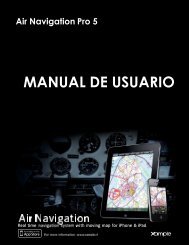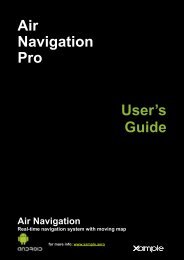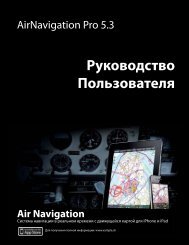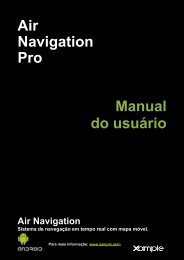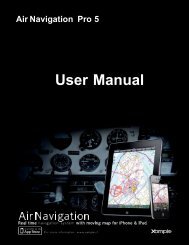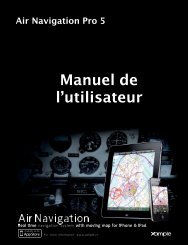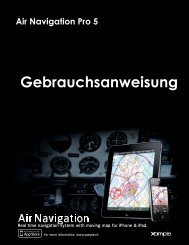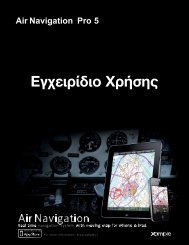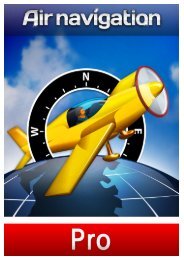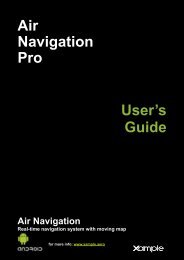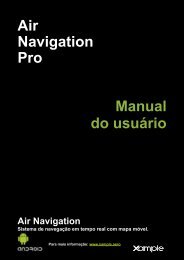Air Navigation Pro 5.2 User Manual - Xample
Air Navigation Pro 5.2 User Manual - Xample
Air Navigation Pro 5.2 User Manual - Xample
Create successful ePaper yourself
Turn your PDF publications into a flip-book with our unique Google optimized e-Paper software.
Columns names and definition are:<br />
‣ waypoint_id (text, usually less than 6 characters, required value)<br />
‣ waypoint_name (text, longer description of the waypoint)<br />
‣ waypoint_type (number: 1=<strong>Air</strong>port, 2=fix, 3=waypoint,4=Helipad, 5=seaplane base,<br />
8=IFR waypoint, 10=DME, 11=NDB, 12=VOR, 13=NDB/DME, 14=VOR/DME, 15=TACAN,<br />
16=VORTAC)<br />
‣ waypoint_longitude (number with decimal)<br />
‣ waypoint_latitude (number with decimal)<br />
‣ waypoint_elevation (number, elevation in feet)<br />
‣ waypoint_country (text)<br />
‣ waypoint_state (text, example California)<br />
‣ waypoint_channel (text)<br />
‣ waypoint_frequency (number, for navaids only)<br />
‣ main_runway_orientation (number 1 to 360)<br />
File structure for frequencies<br />
To be valid, a frequencies file must start with a row listing the columns<br />
names separated by a tab character. The other lines are the actual frequencies<br />
values (1 line per frequency). Values can be empty but they must be separated<br />
by a tab character.<br />
Here’s an example below of how it would look like on the Windows «Notepad»:<br />
Go back to index 66



